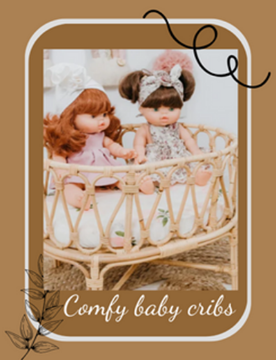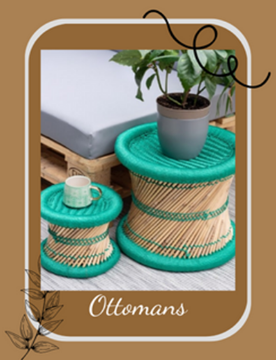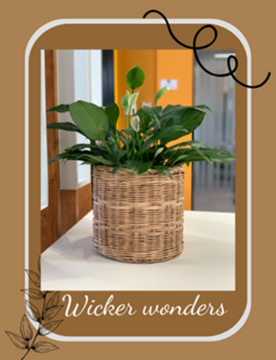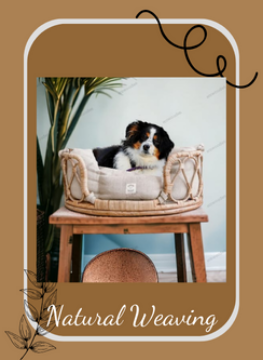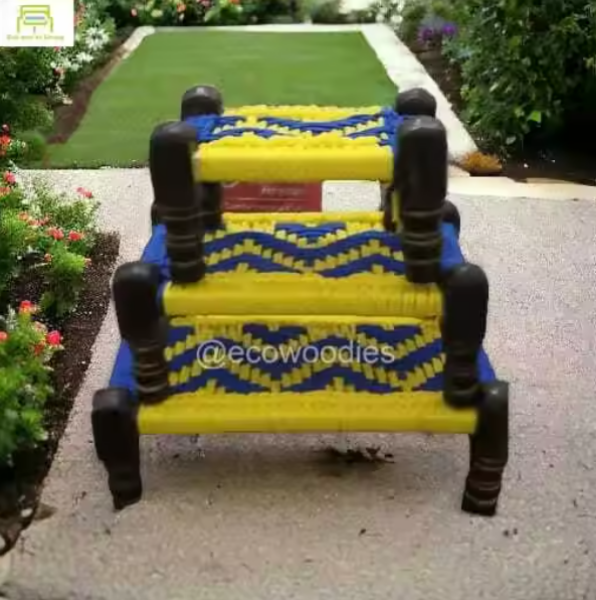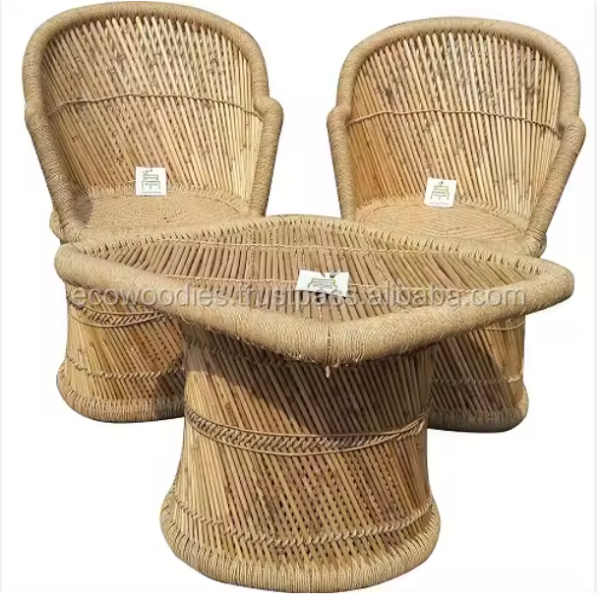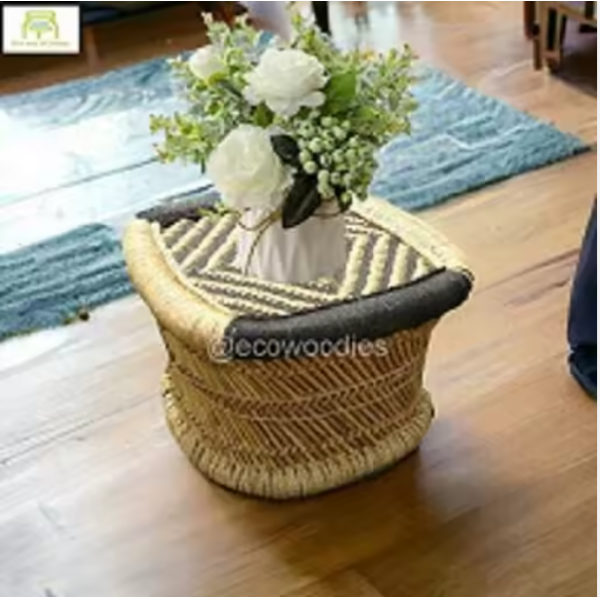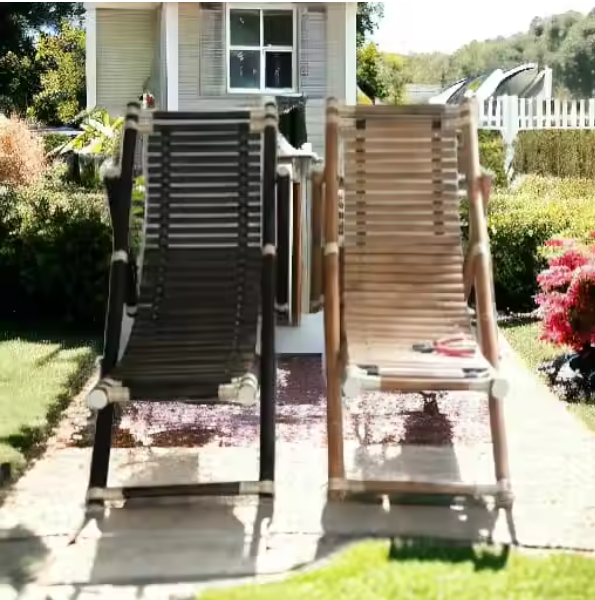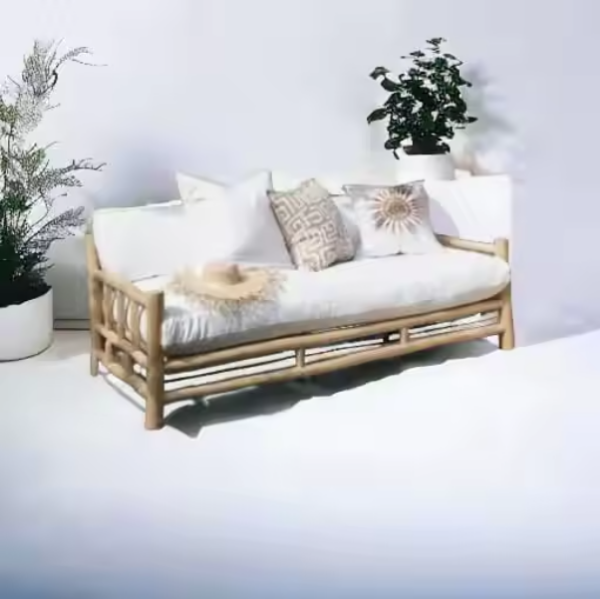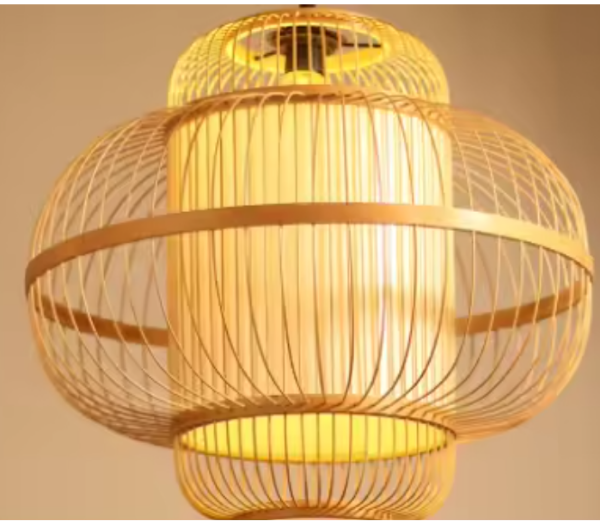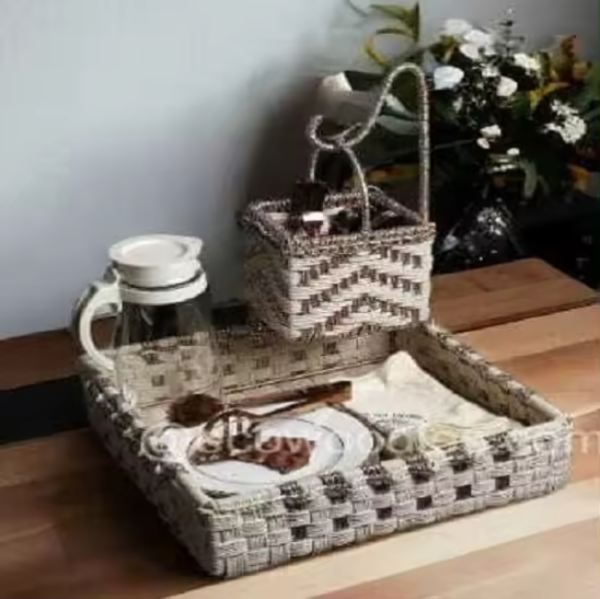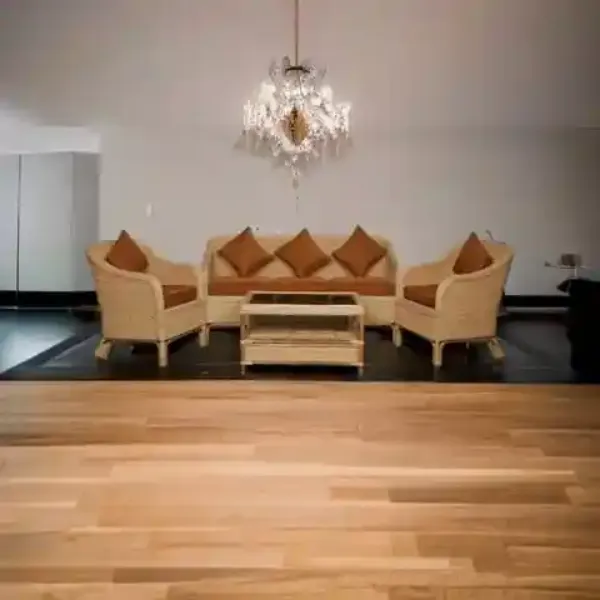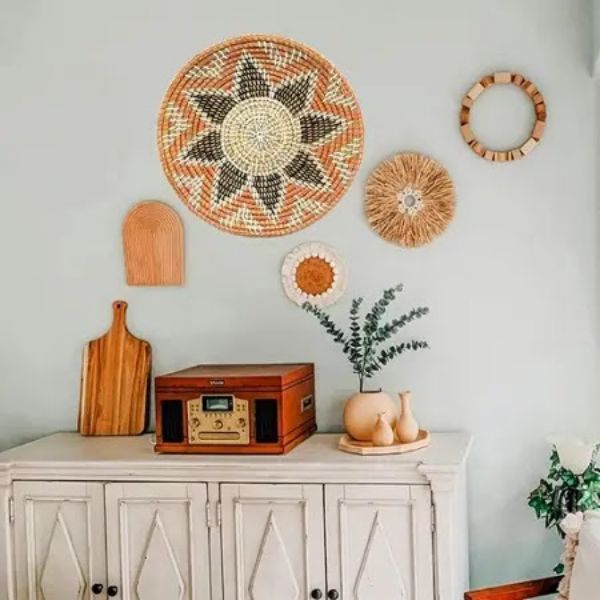In today's world, where environmental consciousness is becoming increasingly important, we are constantly seeking ways to reduce our carbon footprint and embrace sustainable living. One innovative product that has captured the attention of eco-conscious consumers is the Peeda stool. This remarkable piece of furniture not only offers versatility and functionality but also embodies the principles of sustainability and responsible manufacturing. In this comprehensive blog post, we will delve into the world of the Peeda stool, exploring its unique features, environmental benefits, and the story behind its creation.
Introduction to the Peeda Stool
The Peeda stool is a deceptively simple yet ingenious piece of furniture designed and manufactured by a company dedicated to promoting sustainable practices. At first glance, it may appear to be an ordinary stool, but upon closer inspection, one discovers a world of possibilities and eco-friendly innovation.
Crafted from a single, continuous piece of recyclable polypropylene, the Peeda stool is a true testament to the principles of minimalism and efficient design. Its sleek, modern aesthetic seamlessly blends form and function, allowing it to complement a wide range of interior styles, from contemporary to rustic.
The Peeda Stool stands as an emblem of craftsmanship, heritage, and community in the heart of the tribal regions of Southeast Asia. Rooted in centuries-old traditions, the Peeda Stool is not merely a piece of furniture but a symbol of cultural identity and artistic ingenuity. Crafted by skilled artisans using locally-sourced materials such as bamboo, rattan, and intricately woven fibers, each Peeda Stool tells a story of resilience and resourcefulness. Its design, characterized by its elegant simplicity and ergonomic structure, reflects a deep understanding of the natural world and the practical needs of everyday life in the region.
Passed down through generations, the Peeda Stool embodies the collective wisdom and shared values of its people, serving as a focal point for gatherings, ceremonies, and communal activities. Beyond its utilitarian function, the Peeda Stool serves as a canvas for artistic expression, with intricate patterns and motifs adorning its surface, each carrying its own symbolic significance. As a cultural artifact, the Peeda Stool serves as a bridge between the past and the present, connecting contemporary communities with their rich heritage and traditional practices. Its significance extends beyond its physical form, encompassing the stories, rituals, and social dynamics that have shaped its existence over time.
In an era marked by rapid modernization and globalization, the Peeda Stool serves as a reminder of the importance of preserving and celebrating indigenous knowledge and craftsmanship. Through its timeless design and enduring cultural significance, the Peeda Stool continues to inspire reverence and admiration, serving as a testament to the enduring legacy of Southeast Asia's tribal communities.
The Story Behind the Peeda Stool
The creation of the Peeda stool is a fascinating tale that begins with a passionate team of designers and engineers who shared a vision of creating products that not only serve their intended purpose but also contribute to a greener, more sustainable future.
Inspired by the concept of "less is more," the team embarked on a journey to develop a seating solution that would minimize waste and maximize functionality. Through countless iterations and prototypes, they ultimately arrived at the ingenious design of the Peeda stool.
The name "Peeda" is derived from the word "pedal," as the stool's unique shape and construction resemble the smooth, continuous motion of a bicycle pedal. This connection to an environmentally friendly mode of transportation further underscores the stool's eco-conscious origins.
The story behind the Peeda Stool is a tapestry woven with threads of tradition, ingenuity, and cultural significance. Originating in the tribal regions of Southeast Asia, the Peeda Stool traces its lineage back through generations of skilled artisans who honed their craft amidst the lush landscapes and vibrant communities of the region. Rooted in a deep reverence for nature and a profound understanding of local materials, the Peeda Stool reflects the symbiotic relationship between humans and their environment. Its creation is a labor of love, with artisans meticulously selecting and shaping bamboo, rattan, and other natural fibers to fashion a piece of furniture that is as durable as it is elegant.
But the story of the Peeda Stool extends far beyond its physical construction. It is a story of resilience in the face of adversity, as communities navigated the complexities of colonialism, globalization, and modernization while striving to preserve their cultural heritage. The Peeda Stool became more than just a piece of furniture; it became a symbol of identity and pride, a tangible link to the traditions and values passed down through generations.
Each Peeda Stool carries with it a unique narrative, reflecting the diverse tapestry of cultures and histories that define Southeast Asia's tribal communities. From the intricate patterns adorning its surface to the rituals and ceremonies that surround its use, the Peeda Stool is imbued with layers of meaning and symbolism that speak to the richness of its cultural heritage.
As the world continues to evolve, the story of the Peeda Stool remains a testament to the resilience of indigenous communities and the enduring power of tradition. It serves as a reminder of the importance of preserving and celebrating cultural diversity, and as a bridge that connects past and present, tradition and innovation. In a rapidly changing world, the Peeda Stool stands as a beacon of continuity, reminding us of the timeless beauty and significance of our shared human heritage.
Versatility and Functionality
One of the standout features of the Peeda stool is its incredible versatility. Designed to adapt to various settings and purposes, this multifaceted piece of furniture can seamlessly transition from a casual seating option to a functional side table or even a decorative accent piece.
In the living room, the Peeda stool can serve as an additional seating solution for guests or as a convenient spot to rest a book or a cup of coffee. In the bedroom, it can double as a nightstand or a stylish perch for folded clothes or accessories. Even in the kitchen or home office, the stool can find its place as a practical step stool or a minimalist workspace.
The Peeda stool's lightweight construction and compact size make it easy to move and rearrange, allowing you to adapt your living space to suit your ever-changing needs. Its versatility extends beyond residential settings, as it can also be seamlessly incorporated into commercial spaces, such as offices, cafes, or retail environments, adding a touch of modern flair while providing functional seating or display options.
Versatility and functionality are intrinsic qualities woven into the fabric of the Peeda Stool, making it a timeless and indispensable piece of furniture in the homes and communities of Southeast Asia's tribal regions. Beyond its aesthetic appeal and cultural significance, the Peeda Stool's design embodies a harmonious balance between form and function, catering to a myriad of practical needs and everyday activities.
One of the defining features of the Peeda Stool is its adaptability to various environments and purposes. Its compact size and lightweight construction allow for easy mobility, enabling users to effortlessly transport it from one place to another as needed. Whether serving as additional seating for guests during communal gatherings, a makeshift table for meals or activities, or even as a temporary storage solution, the Peeda Stool seamlessly transitions between different roles, reflecting the resourcefulness and ingenuity of its creators.
Moreover, the ergonomic design of the Peeda Stool ensures comfort and stability, even during prolonged use. Its sturdy yet flexible structure provides adequate support for individuals of all ages, making it an inclusive and accessible piece of furniture within the community. Whether used indoors or outdoors, in formal settings or casual gatherings, the Peeda Stool remains a versatile and reliable companion, adapting effortlessly to the ever-changing needs and dynamics of everyday life.
Furthermore, the Peeda Stool's functionality extends beyond its primary role as a seating or resting surface. Its innovative design often incorporates additional features such as built-in storage compartments or modular components, further enhancing its utility and practicality. This versatility allows the Peeda Stool to serve as a multi-functional solution for various household tasks and organizational needs, maximizing space efficiency and streamlining daily routines.
In essence, versatility and functionality are not just attributes of the Peeda Stool; they are fundamental principles that define its essence and enduring appeal. As a testament to the ingenuity and craftsmanship of its creators, the Peeda Stool continues to stand the test of time, remaining an indispensable fixture in the lives of generations past, present, and future.
Environmental Benefits
Beyond its practical applications, the true beauty of the Peeda stool lies in its commitment to sustainability and environmental responsibility. From its inception to its production and eventual disposal, every aspect of the stool has been carefully designed to minimize its ecological footprint.
- Sustainable Materials The Peeda stool is crafted from a single, continuous piece of recyclable polypropylene, a thermoplastic polymer that is highly durable and resistant to wear and tear. This material is not only recyclable but also free from harmful chemicals, ensuring a safer and more eco-friendly product.
- Efficient Manufacturing Process The manufacturing process of the Peeda stool is a testament to resource efficiency. Through a process called injection molding, the stool is created in a single step, eliminating the need for multiple components or excessive waste. This streamlined approach minimizes the consumption of raw materials and energy, further reducing the stool's environmental impact.
- Minimal Packaging In line with its eco-conscious ethos, the Peeda stool is shipped with minimal packaging, often using recycled or biodegradable materials. This approach not only reduces waste but also ensures that the product's carbon footprint remains as low as possible during transportation and distribution.
- Longevity and Durability The Peeda stool is designed to withstand the test of time. Its durable construction and high-quality materials ensure a long lifespan, reducing the need for frequent replacements and minimizing the demand for new resources. By investing in a product that lasts, consumers can play their part in reducing waste and promoting a more sustainable lifestyle.
Design and Aesthetics
While the Peeda stool's environmental credentials are undoubtedly impressive, its aesthetic appeal should not be overlooked. The stool's sleek, minimalist design and clean lines make it a versatile addition to any interior space, blending seamlessly with a wide range of styles and decor.
Available in a variety of colors, from vibrant hues to understated neutrals, the Peeda stool offers countless possibilities for personalizing and accentuating your living environment. Its compact size and lightweight construction also make it easy to incorporate into even the most space-conscious settings, allowing you to maximize functionality without compromising on style.
At first glance, the Peeda Stool captivates with its simple yet sophisticated appearance. Its clean lines and minimalistic silhouette exude a sense of understated elegance, while its compact size and lightweight construction lend it an air of versatility and practicality. Whether nestled in the corner of a room or arranged in a communal gathering space, the Peeda Stool effortlessly complements its surroundings, enhancing the aesthetic appeal of any environment.
Yet, it is upon closer inspection that the true beauty of the Peeda Stool is revealed. Intricate patterns and motifs adorn its surface, each imbued with symbolic meaning and cultural significance. From geometric designs inspired by the natural world to stylized representations of ancestral legends, these decorative elements serve as a visual homage to the rich tapestry of traditions and beliefs that define Southeast Asia's tribal communities.
Moreover, the materials used in the construction of the Peeda Stool further enhance its aesthetic appeal. Locally-sourced bamboo, rattan, and other natural fibers are expertly woven and sculpted to create a tactile and visually engaging texture, adding depth and dimension to its design. Whether left in its natural state or embellished with vibrant dyes and pigments, the Peeda Stool's materials evoke a sense of connection to the land and the cultural heritage of its makers.
Beyond its visual appeal, the design of the Peeda Stool is also rooted in practicality and functionality. Its ergonomic shape ensures comfort and support during use, while its durable construction ensures longevity and resilience in the face of everyday wear and tear. As a result, the Peeda Stool transcends mere aesthetics, embodying a holistic approach to design that celebrates both beauty and utility.
In essence, the Peeda Stool stands as a testament to the transformative power of design, bridging the gap between artistic expression and everyday functionality. Through its timeless aesthetic and thoughtful craftsmanship, it continues to captivate and inspire, serving as a symbol of cultural identity and creative ingenuity in the homes and communities of Southeast Asia and beyond.
Ergonomics and Comfort
Despite its minimalist appearance, the Peeda stool has been carefully engineered to provide optimal comfort and ergonomic support. The gently curved seat and slightly angled backrest offer a surprising level of comfort, ensuring that users can enjoy extended seating periods without experiencing discomfort or fatigue.
The stool's height and dimensions have been meticulously calculated to accommodate a wide range of body types and seating preferences, making it a practical choice for both residential and commercial settings.
Ergonomics and comfort are paramount considerations in the design of the Peeda Stool, ensuring not only physical well-being but also a pleasurable and immersive user experience. Rooted in a deep understanding of human anatomy and movement, the Peeda Stool's ergonomic design prioritizes functionality and support, promoting optimal posture and reducing the risk of discomfort or strain during prolonged use.
Central to the Peeda Stool's ergonomic appeal is its thoughtful construction, which takes into account the natural curvature of the spine and the distribution of body weight. The stool's seat is meticulously sculpted to provide ample surface area for the user's buttocks while gently contouring to the shape of their body, ensuring even weight distribution and minimizing pressure points. Additionally, the stool's height and dimensions are carefully calibrated to promote a neutral sitting position, with feet firmly planted on the ground and knees bent at a comfortable angle.
Furthermore, the materials used in the construction of the Peeda Stool contribute to its ergonomic prowess. Locally-sourced bamboo and rattan, known for their flexibility and resilience, are expertly woven and shaped to provide structural integrity and support. The natural elasticity of these materials allows the stool to yield slightly to the user's movements, accommodating subtle shifts in posture while maintaining stability and comfort.
In addition to its ergonomic design, the Peeda Stool also prioritizes comfort through its attention to detail and craftsmanship. Smooth edges and rounded corners prevent discomfort or chafing, while the use of breathable materials ensures adequate ventilation and temperature regulation, even in humid climates. Moreover, the stool's lightweight construction and compact footprint enhance its versatility, allowing users to easily reposition or transport it as needed without sacrificing comfort or stability.
Ultimately, the Peeda Stool's commitment to ergonomics and comfort extends beyond mere functionality, embodying a holistic approach to design that prioritizes the well-being and satisfaction of its users. Whether used for casual seating, dining, or communal gatherings, the Peeda Stool stands as a testament to the transformative power of thoughtful design, enriching the lives of individuals and communities alike with its seamless blend of comfort, functionality, and aesthetic appeal.
Community and Collaboration
The Peeda stool is more than just a product; it represents a community of like-minded individuals who share a passion for sustainable living and responsible consumption. The company behind the stool actively collaborates with designers, artists, and environmentalists to continuously explore new ways to reduce their ecological footprint and promote greater awareness about the importance of sustainability.
Through partnerships and collaborations, the Peeda stool has become a symbol of a broader movement towards a more eco-conscious society, inspiring others to embrace environmentally friendly practices in their daily lives.
Conclusion
The Peeda stool is a remarkable example of how innovative design can harmoniously blend form, function, and environmental responsibility. Its ingenious construction, versatile applications, and commitment to sustainability make it a standout choice for eco-conscious consumers seeking practical and stylish seating solutions.
By embracing the Peeda stool, individuals and businesses alike can contribute to a greener future while enjoying the benefits of a multifunctional and aesthetically pleasing piece of furniture. As the demand for sustainable products continues to grow, the Peeda stool serves as a testament to the power of human ingenuity and our collective ability to create solutions that respect and protect our planet.
Whether you are an environmentalist, a design enthusiast, or simply someone seeking practical and eco-friendly products for your home or workspace, the Peeda stool is a compelling choice that exemplifies the best of sustainable innovation.
FAQs
Q.1: What materials is the Peeda stool made from?
The Peeda stool is made from a single, continuous piece of recyclable polypropylene, a durable and environmentally friendly thermoplastic polymer. This material is not only recyclable but also free from harmful chemicals, ensuring a safer and more eco-friendly product.
Q.2: How is the Peeda stool manufactured?
The Peeda stool is manufactured through a process called injection molding, which allows it to be created in a single step, eliminating the need for multiple components or excessive waste. This streamlined approach minimizes the consumption of raw materials and energy, further reducing the stool's environmental impact.
Q.3: Can the Peeda stool be used for different purposes?
Absolutely! One of the standout features of the Peeda stool is its incredible versatility. It can be used as a casual seating option, a side table, a nightstand, a step stool, or even a decorative accent piece. Its lightweight construction and compact size make it easy to move and rearrange, allowing you to adapt your living space to suit your ever-changing needs.
Q.4: What are the color options available for the Peeda stool?
The Peeda stool is available in a variety of colors, from vibrant hues to understated neutrals, allowing you to personalize and accentuate your living environment. Some popular color options include classic black and white, as well as bold shades like red, blue, and green.
Q.5: Is the Peeda stool comfortable to sit on?
Despite its minimalist appearance, the Peeda stool has been carefully engineered to provide optimal comfort and ergonomic support. The gently curved seat and slightly angled backrest offer a surprising level of comfort, ensuring that users can enjoy extended seating periods without experiencing discomfort or fatigue. The stool's height and dimensions have been meticulously calculated to accommodate a wide range of body types and seating preferences.

